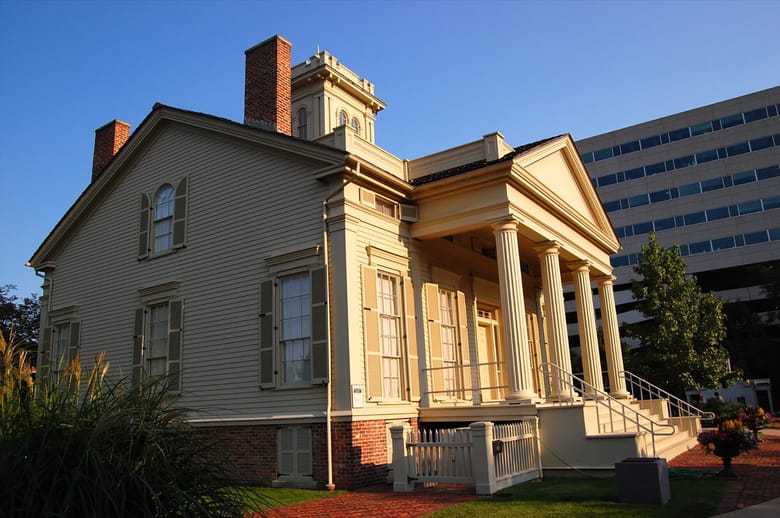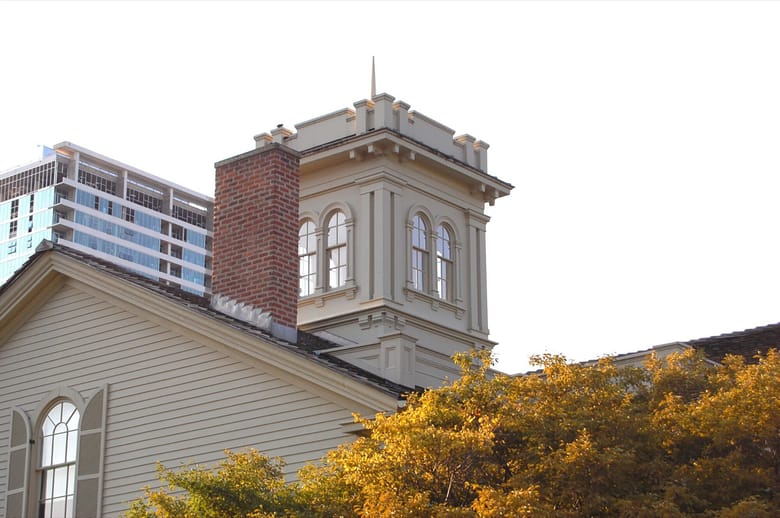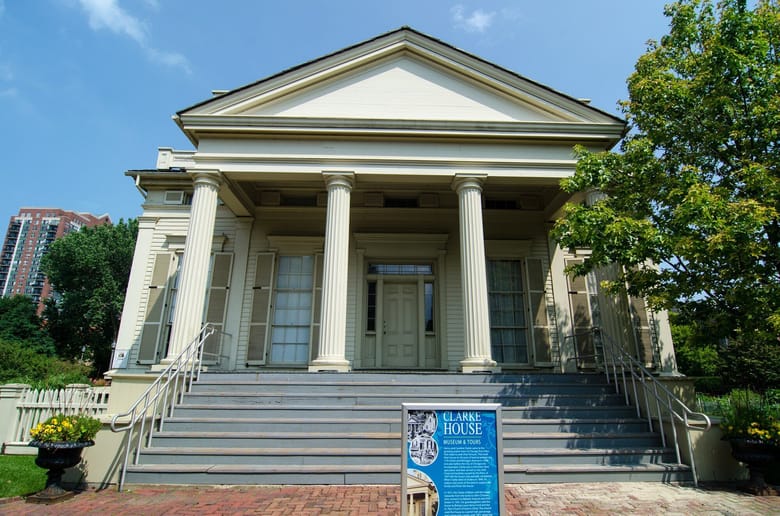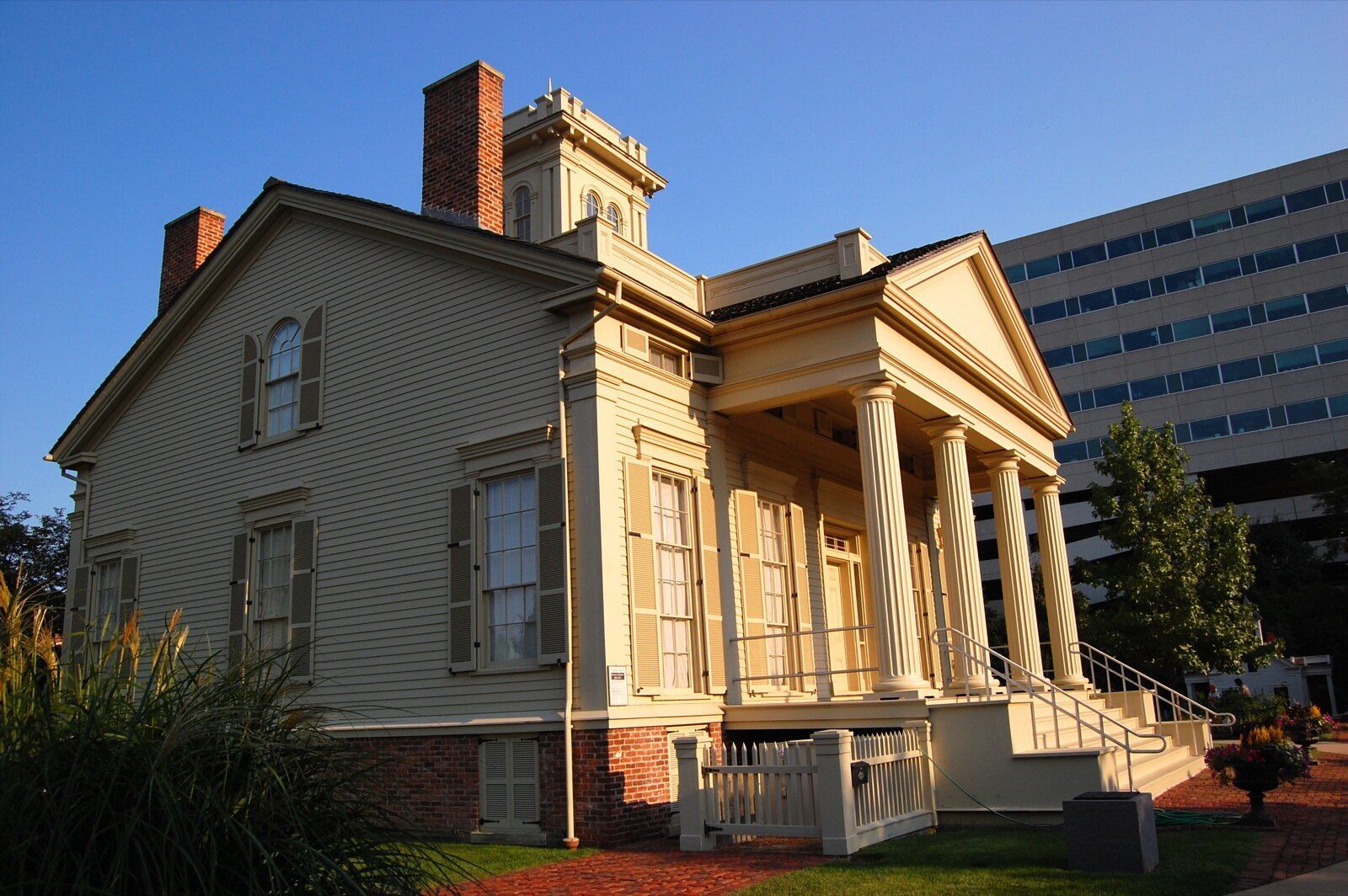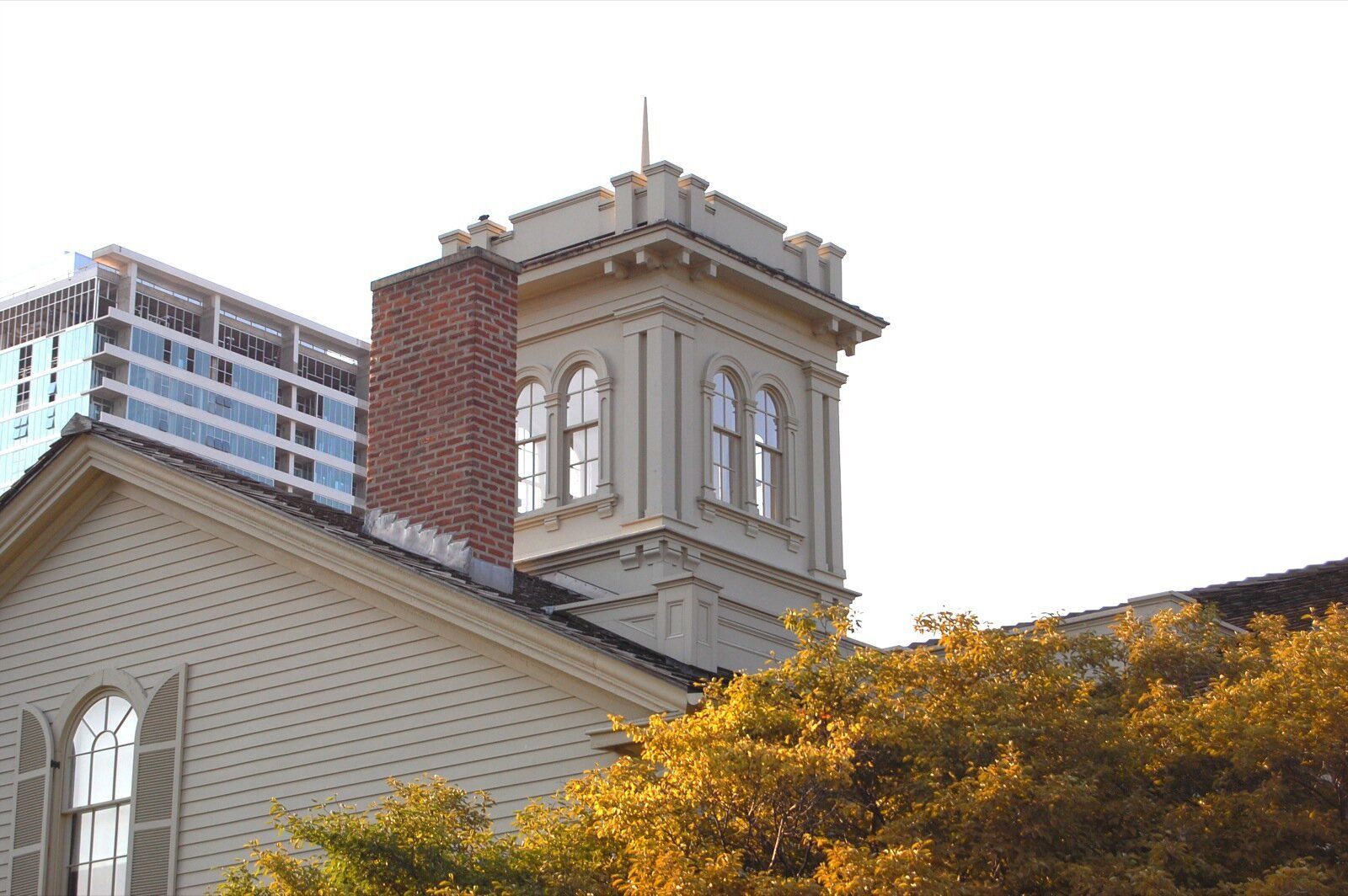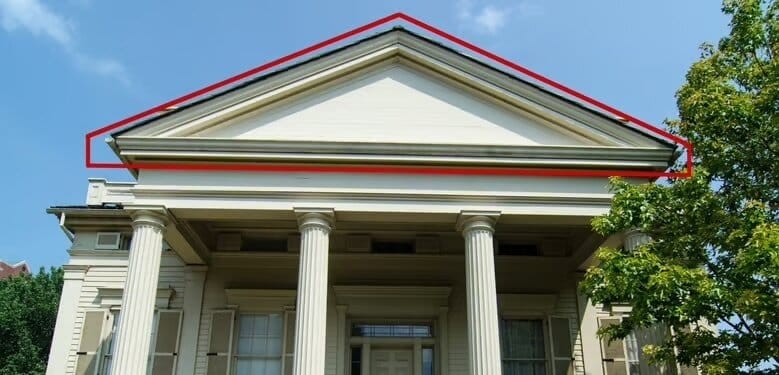OLDER THAN CHICAGO
Chicago wasn’t incorporated until 1837, but by then it had already begun to attract migrants from other parts of the country. Henry Brown Clarke moved his family from Utica, New York, to the fledgling city of Chicago in 1835. Clarke quickly found success selling hardware and building supplies and began building this home near 16th St and Michigan Ave in 1836. It was the first substantial house in an area that would eventually become the Prairie Avenue District. At the time of its construction, the house was surrounded by open land—what we now know as the South Loop.
Clarke’s house emulated the ancient Greek style. Greek Revival was popular in early America because it linked the new country with ancient democracy. The elements of a Greek temple were brought down to residential scale, with a grand staircase entrance beneath a pediment resting on substantial columns, and wooden clapboard siding whitewashed to suggest marble. A substantial timber frame gave shape to the house, and its durability has helped the house survive these many years.
Henry Clarke died in 1849 and his widow, Caroline, sold off much of the house’s surrounding land to support their family and continue work on the house. In the 1850s, the rooftop cupola was installed and a new porch was constructed to face the newly gas-lit Michigan Avenue.
A HOUSE ON THE MOVE
In 1871, the Clarke-Ford house was purchased and moved several miles to the south. This sort of move was not a terribly uncommon occurrence at the time. It stood near 45th Street and Wabash for more than a century, serving as a residence and later as part of Bishop Louis Henry Ford’s church.
When the church no longer needed the house, the City of Chicago saw an opportunity. Appreciating the structure’s history, the city purchased it and made plans to move the house once again. Shortly before the scheduled move in 1977, a fire damaged the house. Nonetheless, the move went forward in December. Inclement weather led to the house being stuck up in the air for two weeks, when hydraulic jacks used to hoist it up and over the "L" froze.
Once installed in its present location, the Chicago Women’s Park, restoration efforts began. Work over many years has returned the house to an appearance the Widow Clarke would recognize. In the process, it has opened a window on early Chicago history for the Clarke House’s many visitors.
In 2022, the City of Chicago officially renamed the Clarke House to the Clarke-Ford House, honoring both its early settler origins and its ties to Chicago’s Black history. The new name recognizes Bishop Louis Henry Ford, a prominent religious and civil rights leader who owned the house for decades and used it as part of the St. Paul Church of God in Christ community. Bishop Ford, who later became the national leader of the Church of God in Christ was known for his activism, public service, and dedication to social justice. Thanks to the care and stewardship of Bishop Ford and his congregation, this rare piece of early Chicago history has been preserved for future generations.
Did you know?
Clarke House has been moved twice since it was built, with the second move returning it to a location near its original site.
Did you know?
The only older house standing in Chicago is the Noble-Seymour-Crippen House in Norwood Park - but it was only annexed to Chicago in 1893.
Did you know?
The Clarke House was designated a Chicago Landmark in October of 1970.
